A well-chosen soil for an indoor or garden plant, along with the correct temperature regime and timely watering, is the main factor in the normal development of the plant. The market is flooded with offers from different manufacturers, the quality of goods is different, and the buyer does not want to waste money and energy on a low-quality product.
Therefore, the editors of the site "Ya Nashla" made a detailed review of ready-made soil for plants, and we will also tell you how the soil mixtures differ from one another.
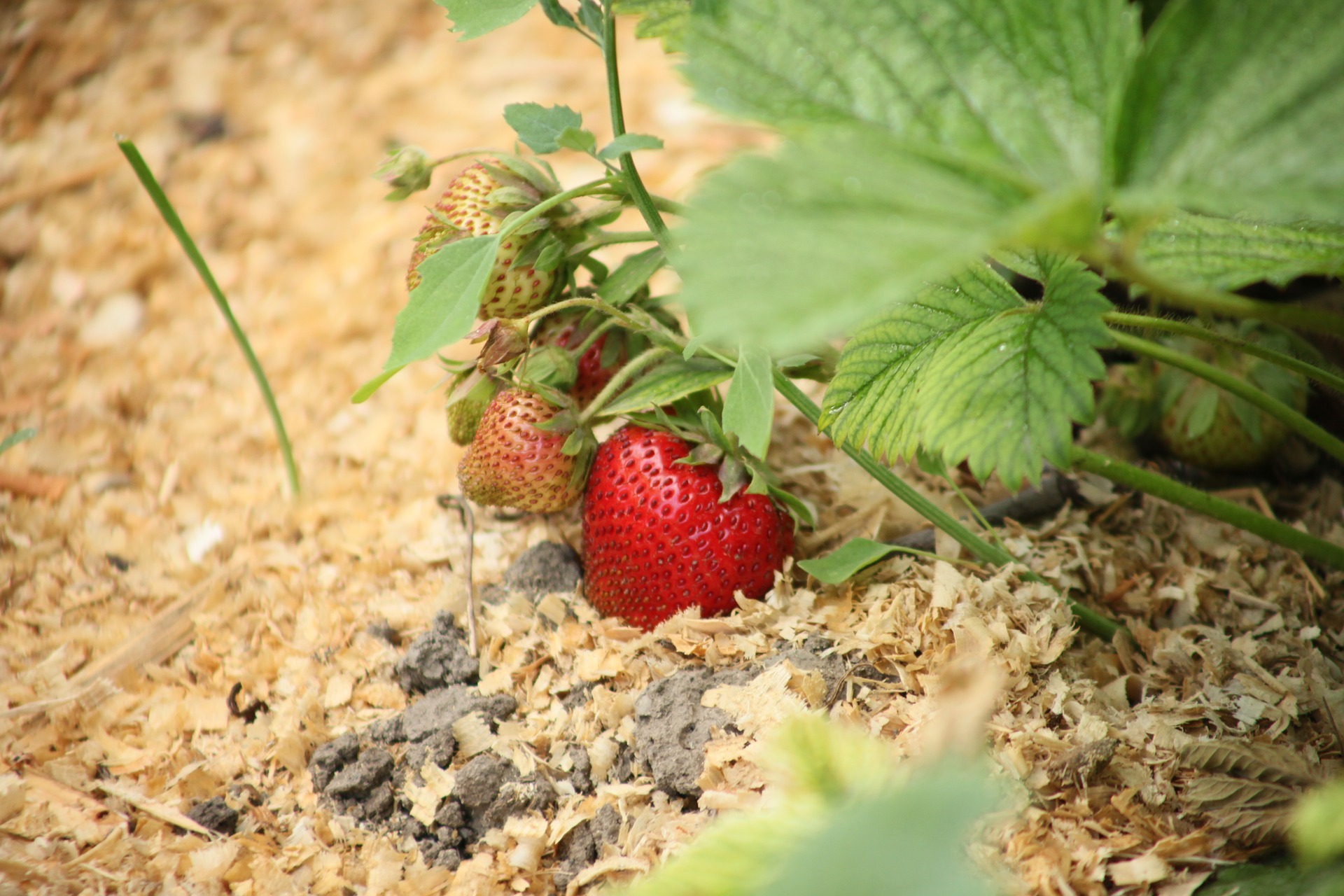
Content
- 1 Criterias of choice
- 2 The main mistakes when choosing
- 3 Review of the best manufacturers
- 4 Rating of high-quality ready-made soil for plants for 2020
- 4.1 Terra Vita Living earth universal 50 l
- 4.2 Zeoflora Moisture-saving for orchids 2.5 l
- 4.3 Earth-Mother Universal for flowers 3 l
- 4.4 Gardener® universal 60 l
- 4.5 Fasco Flower happiness for violets 2.5 l
- 4.6 PETER PEAT Line Pro seedling universal 10 l
- 4.7 Seliger-Agro Miracle-Garden for seedlings 10 l
- 4.8 Agricola flower 10 l
- 4.9 Hera for cacti and succulents 2.5 l
- 4.10 Garden of Miracles for conifers 5 l
- 5 Conclusion
Criterias of choice
Kinds
Soil for garden and indoor plants can be bought both in the store and do it yourself. But in order to choose a good product, you need to know what kind of soil there are, and what plants prefer to live where.
Easy
Small plants with a shallow root system thrive in this type of soil. For example: aloe, cyclamen. With a proper irrigation regime and proper soil strengthening, you can get large yields of cherries, pears, sweet cherries, corn. Light soils are well suited for seedling as well as rooting cuttings. If you wish, you can make a light soil yourself according to the following scheme:
- three parts of any peat;
- one piece of sand; leafy land; humus.
Be sure to clear the ground of impurities - stones, twigs, pest larvae before mixing all the components.
Middle
The soil is suitable for most indoor and garden plants. To prepare the mixture with your own hands you will need:
- one part of peat and sand;
- two parts of sod land and humus.
Heavy
Ideal for plants with a very developed root system - when the roots go deep into the soil. You can cook on your own like this - take five parts of sod soil, one part of coarse sand, one part of humus. Mix.
Soil characteristics
The main characteristics of the soil include:
- aeration - otherwise aeration of the substrate, its looseness, porosity;
- moisture capacity - how well the substrate absorbs and retains water;
- acidity level (pH). It can be acidic, slightly acidic (pH 6.0–6.5), neutral (pH 6.5–7.0), and also slightly alkaline - above 7.0. For every plant. For example, roses only survive at neutral pH.
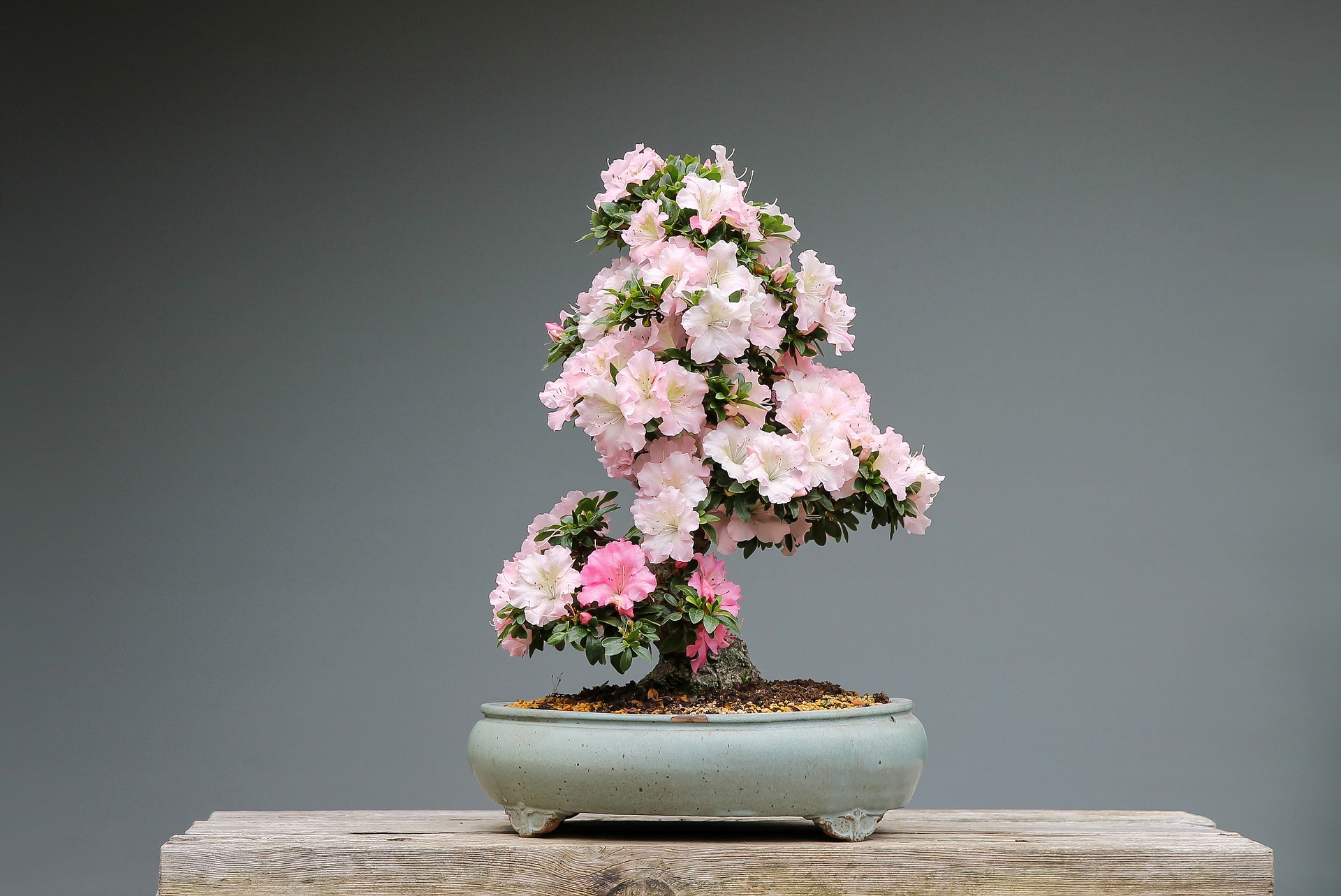
Soil composition
Main components
When making a choice, be sure to pay attention to the composition of the soil mixture. It directly depends on the conditions in which your plant will live, how much nutrients it will receive, what watering regime will have to be set and how often it will be necessary to feed.
- Horse peat - the main component of most soils. It is characterized by a high level of air and moisture capacity. Light, acidic - pH 2.6 to 3.2.The main drawback is that it is poor in nutrients.
- Low peaton the contrary, it contains many nutrients. Therefore, it is not uncommon to find a mixture of high-moor and low-lying peat on sale. Low-lying peat is not used in its pure form, due to the fact that it belongs to heavy soils, quickly cakes, strongly retains water, and almost does not allow air to pass through.
- Biohumus. In fact, this is ordinary humus, that is, organic matter of the soil with nutrients for plants. The prefix "bio" was invented by marketers.
Good, high-quality humus is obtained in the process of processing manure and compost with special lines of earthworms. In practice, the store-bought humus may be land from a former state farm.
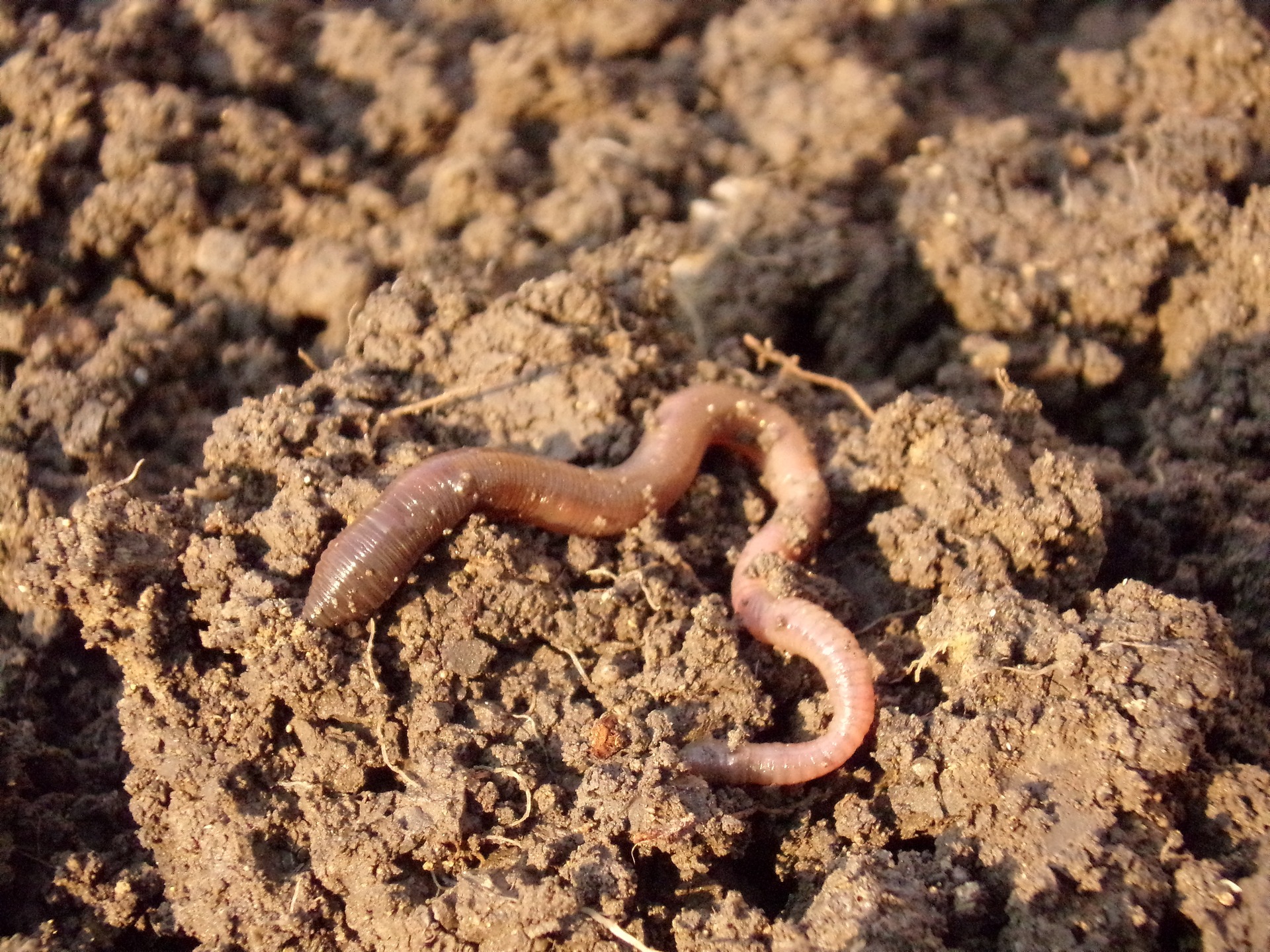
Humus is usually used to improve the quality of the mixture, increase its fertility and nutritional value. Few people grow plants in pure humus, since such soil is characterized by low air permeability and high moisture capacity.
- Leafy soil - soil resulting from the rotting of fallen leaves and tree parts.
- Coniferous land - similar to leaf land, only it is harvested in a coniferous forest. It is characterized by high acidity.
- Sod land - rotted particles of turf, soil that is overgrown with field plants.
Additional components
Consider the most popular substances that can be found in ready-made soil compositions.
Usually, additional components are needed in order to better reveal certain characteristics of the soil - to increase moisture permeability, increase looseness, change the pH value.
- Vermiculite is a mineral with a layered structure (like a sponge) that increases moisture capacity, as it retains moisture well (up to 400-500% of its own weight), and also slowly releases it together with dissolved nutrients. Popular in hydroponics. Also used for mulching and soil aeration.
- Perlite is a volcanic glass that, after additional heat treatment, became porous and lightweight. Makes the mixture breathable, loose. Reduces the likelihood of decay, mold formation. It is used for germinating seeds, rooting cuttings, seedlings both in mixtures (for example, with peat) and in pure form.
- River sand makes the substrate loose, moisture-permeable. Prevents caking of an earthen coma. It is widely used for cacti, succulents, palms. It is necessary for bulbous plants, as it is able to protect the rhizome from excess moisture. The only drawback of the component is that it does not allow air to pass through well when wet. Therefore, you need to ensure that there is not too much sand in the pot.
- Sphagnum or peat moss is able to absorb up to 20 times more water than it weighs. This property can be used in two cases - if you have moisture-loving plants, and if you need to leave for a while. In the second case, wet moss placed in a pot will gradually release the accumulated moisture to the plant, and you will not worry about your pet.
- Charcoal, like moss, is capable of storing and releasing moisture. In addition, it increases the friability of the substrate and is a good natural antiseptic.
- Dolomite flour is one of the best soil deoxidizers. It is often used in mixtures with high-moor peat to reduce the acidity of the latter. It also enriches the substrate with magnesium, which is very important for plants during the growing season.
Be careful! Component-saving manufacturers are replacing dolomite flour with chalk. It works the same way, but does not contain nutrients.
Specialized soils
Divided into groups for:
Cacti, succulents

The main features of the ready-mixed mixture are high water permeability, low amount of nutrients. It is achieved due to the following composition: sand (usually river) - about half, and the second half - leafy earth or high moor peat.
For cacti, it is permissible to add a little coarse sand to the finished mixture. But if the cactus is forest, then it is better, on the contrary, to use a product based on high-moor peat.
Palm trees
All plants of this type are suitable for breathable, loose soil. Therefore, it is worth giving preference to products based on high moor peat with the addition of sand, leaf and sod land. As the plant grows, one must not forget not only to feed and transplant the palm on time, but also to increase the amount of sod land in the pot.
Saintpaulia, other Gesnerian
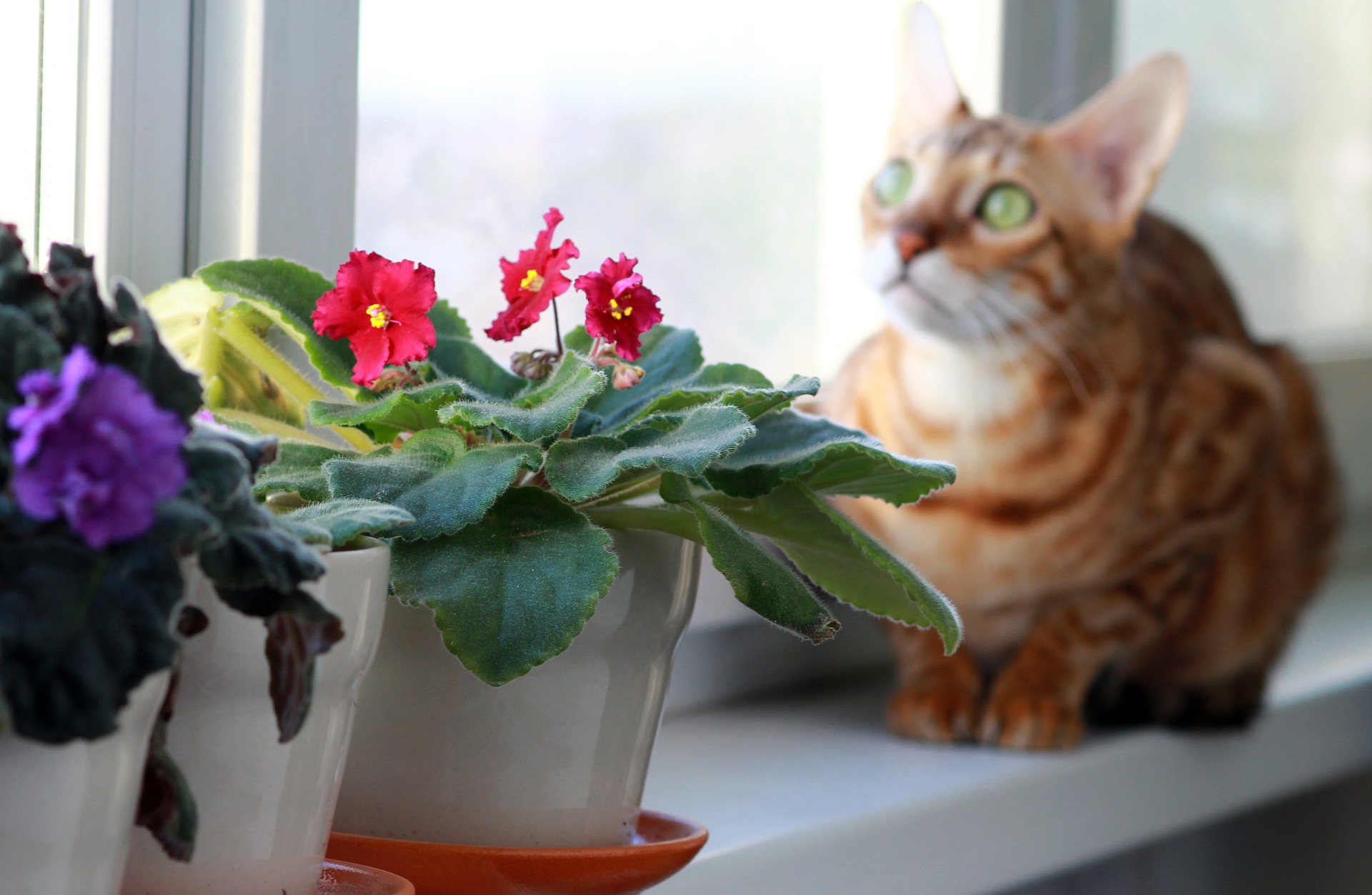
Only acidic soil is suitable for this plant family. The optimal soil can be obtained by mixing peat, sand or perlite (for looseness), coniferous soil, coal and sphagnum (for moisture capacity).
Orchids
There is no single type of soil for orchids, as these flowers are divided into several habitat groups. For example, epiphytic orchids live on trees and bark is best for them, sometimes with an admixture of moss and coal, and in peat they wither.
For the terrestrial type, a mixture of peat, coal, bark and moss, on the contrary, is ideal.
Bromeliads
The mixture usually consists of top peat, sand and leafy earth. For looseness, bark, coniferous soil, sphagnum, coal are often present.
Fernnikov
They always grow in moist, loose, and organic-rich soil. If the store does not have a ready-made mixture for your plant, you can take a mixture for cacti (made from peat, sand) that is poor in organic matter, add humus or leaf humus to it in a 1: 1 ratio.
Gardenia
The main characteristics of the substrate are light, sour, nutritious. The mixture usually consists of high moor peat, river sand and humus or replacing leafy soil, as well as coniferous soil.
Azalea
The finished product for these colors should be light, air-, moisture-permeable, and acidic. Such properties can be achieved by taking high moor peat and coniferous soil (1: 1).
The main mistakes when choosing
- Purchase of the wrong kind of soil mixture. For example, buying a heavy substrate for a plant that grows in light soil - pine, edelweiss.
- Mixture pH error. Corrected by acidification or deoxidation of the soil.
- Insufficient aeration. Corrected by adding baking powder.
- Insufficient or excessive moisture capacity. Corrected with the appropriate impurities. For example, in the case of insufficient moisture content, moss or coal are mixed.
Review of the best manufacturers
Which company is better to give preference to when choosing soil for seedlings or indoor plants? What brands provide a high-quality composition of the mixture, as well as an adequate price? We bring you the following list of manufacturers who have earned a positive reputation over the years in the agricultural market:
- PETER PEAT;
- Terra Vita;
- Zeoflora;
- Agricola;
- Hera;
- Mother Earth;
- Ogorodnik®;
- Garden of Miracles;
- Seliger-Agro;
- Fusco.
Rating of high-quality ready-made soil for plants for 2020
We offer you a rating of substrates with which you can grow a healthy, strong plant.
Terra Vita Living earth universal 50 l
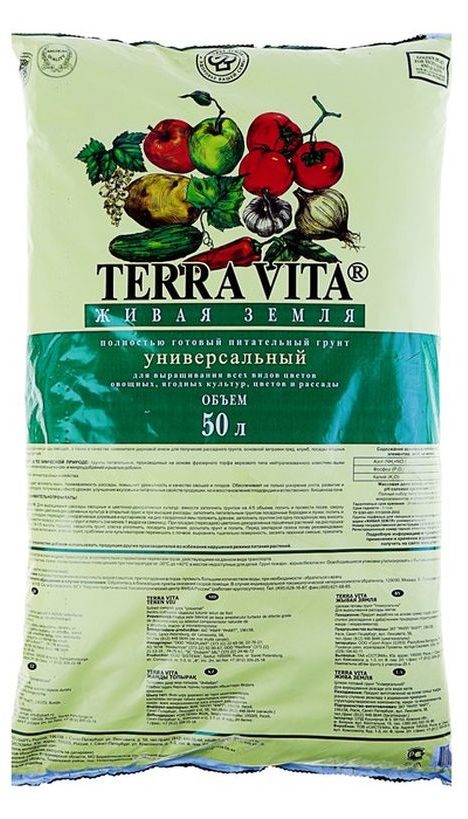
Medium acid soil is a mixture of top peat, vermicompost, perlite, pure river sand and mineral fertilizer. It is widely used in the garden or vegetable garden, as well as on window sills.
Average price: 375 rubles.
Advantages:
- cost;
- large volume;
- with biohumus;
- nutritious;
- loose.
Disadvantages:
- inconvenient packaging.
Zeoflora Moisture-saving for orchids 2.5 l
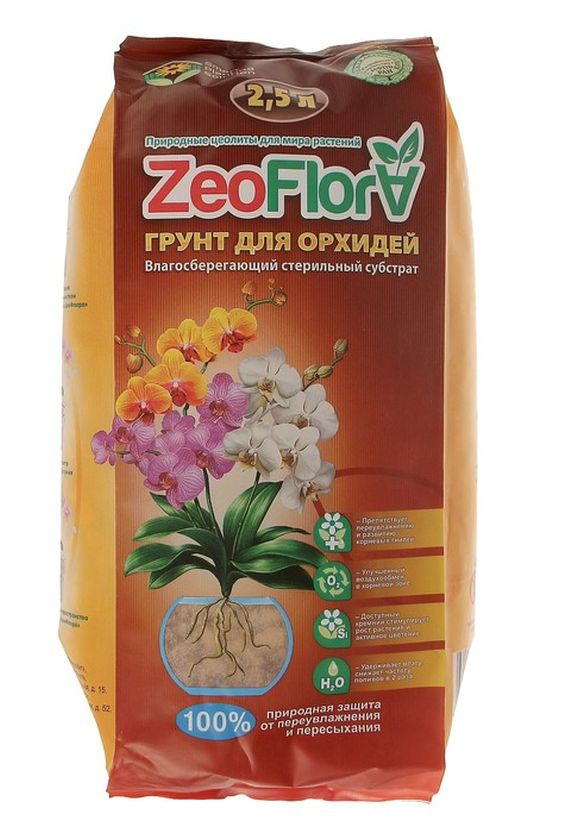
The product is made from zeolite mined at the Khotynetskoye field. The sizes of the mineral particles are calibrated (2-10 mm), there is no debris, dust and impurities in the substrate.
Average price: 290 rubles.
Advantages:
- the use of this soil allows you to quickly build up the root system of the plant;
- parasites do not start;
- acidity - 5.5 -5.6;
- goes well with sphagnum moss.
Disadvantages:
- cost.
Earth-Mother Universal for flowers 3 l
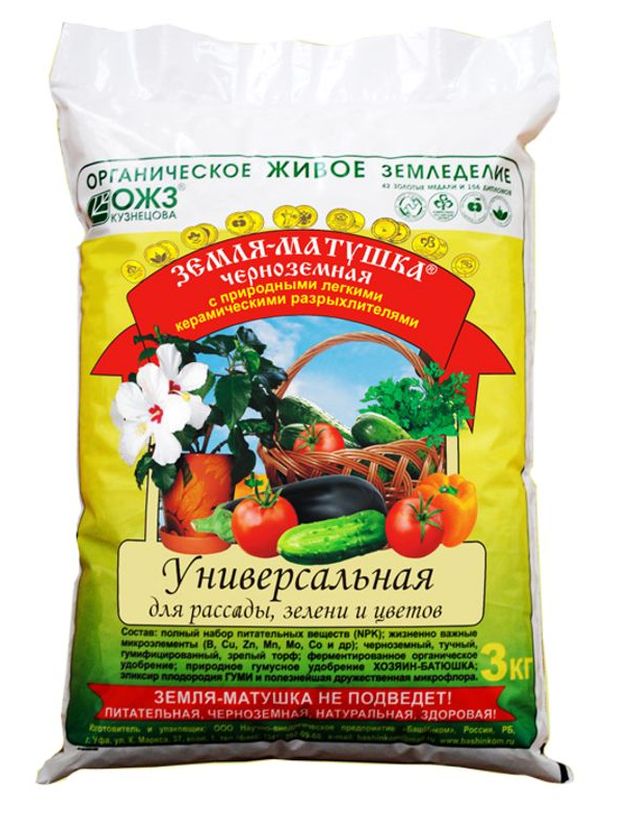
Ready-made soil, the composition of which is ideally matched for growing berries, vegetables, greens indoors; planting or transplanting indoor flowers, seedlings.
Average price: 42 rubles.
Advantages:
- budgetary;
- with biohumus;
- with trace elements (nitrogen, phosphorus, potassium);
- loose.
Disadvantages:
- not.
Gardener® universal 60 l
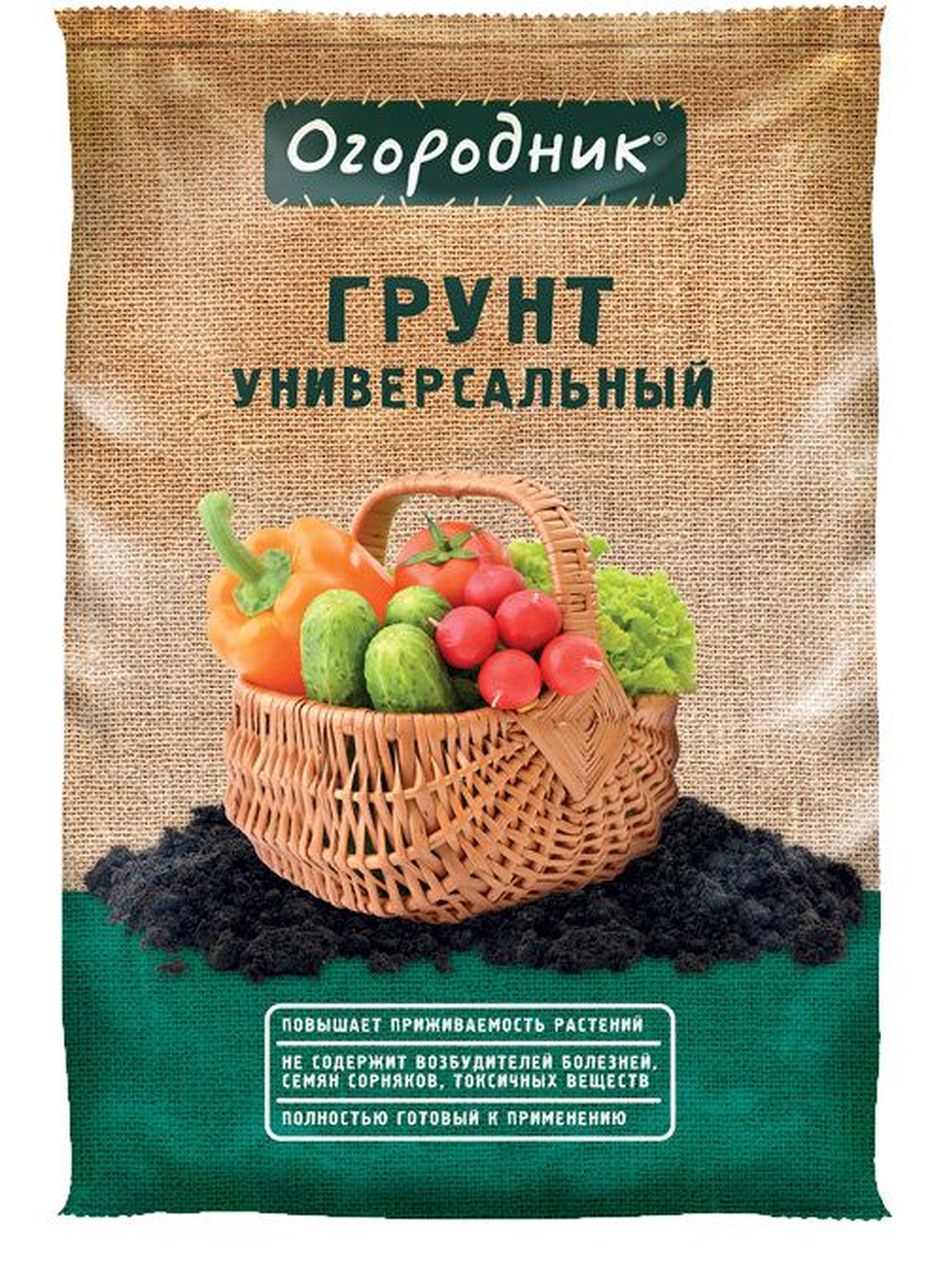
Medium acid peat soil is suitable for transplanting any garden and indoor plants. Best for the following plants:
- vegetables, fruits - pink, nightshade, green crops;
- garden - annual and perennial flowers, conifers, ornamental shrubs;
- indoor - ficus, ivy, geranium, some types of palm trees.
Average price: 247 rubles.
Advantages:
- cost;
- large volume of packaging;
- nutritious, there are sufficient quantities of all micro and macro elements;
- loose.
Disadvantages:
- may contain impurities;
- inconvenient packaging - no handles.
Fasco Flower happiness for violets 2.5 l
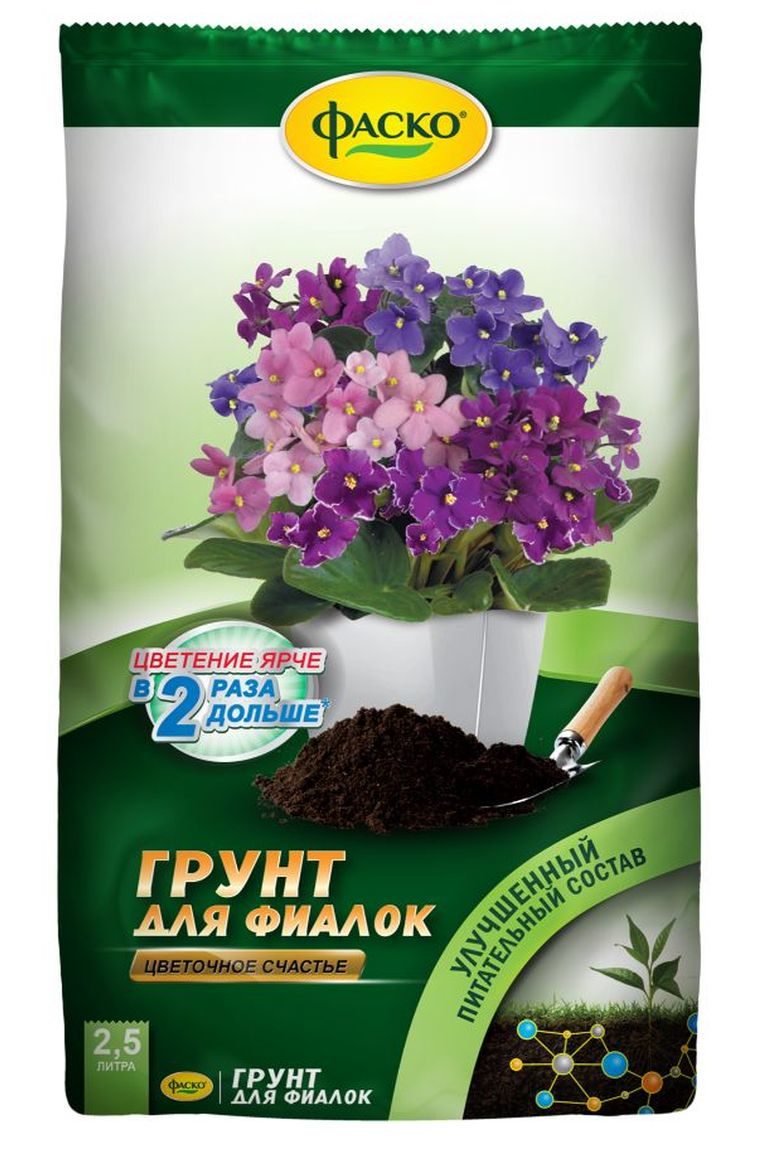
Medium acid peat soil is perfect for Saintpaulias, as well as other indoor and ornamental plants. Not suitable for growing seedlings, vegetables, fruit and berry crops, as it contains a lot of potassium - the plants will bloom well, flourish, “fatten”, but the fruits will be small.
Average price: 39 rubles.
Advantages:
- affordable price;
- balanced composition.
Disadvantages:
- not.
PETER PEAT Line Pro seedling universal 10 l
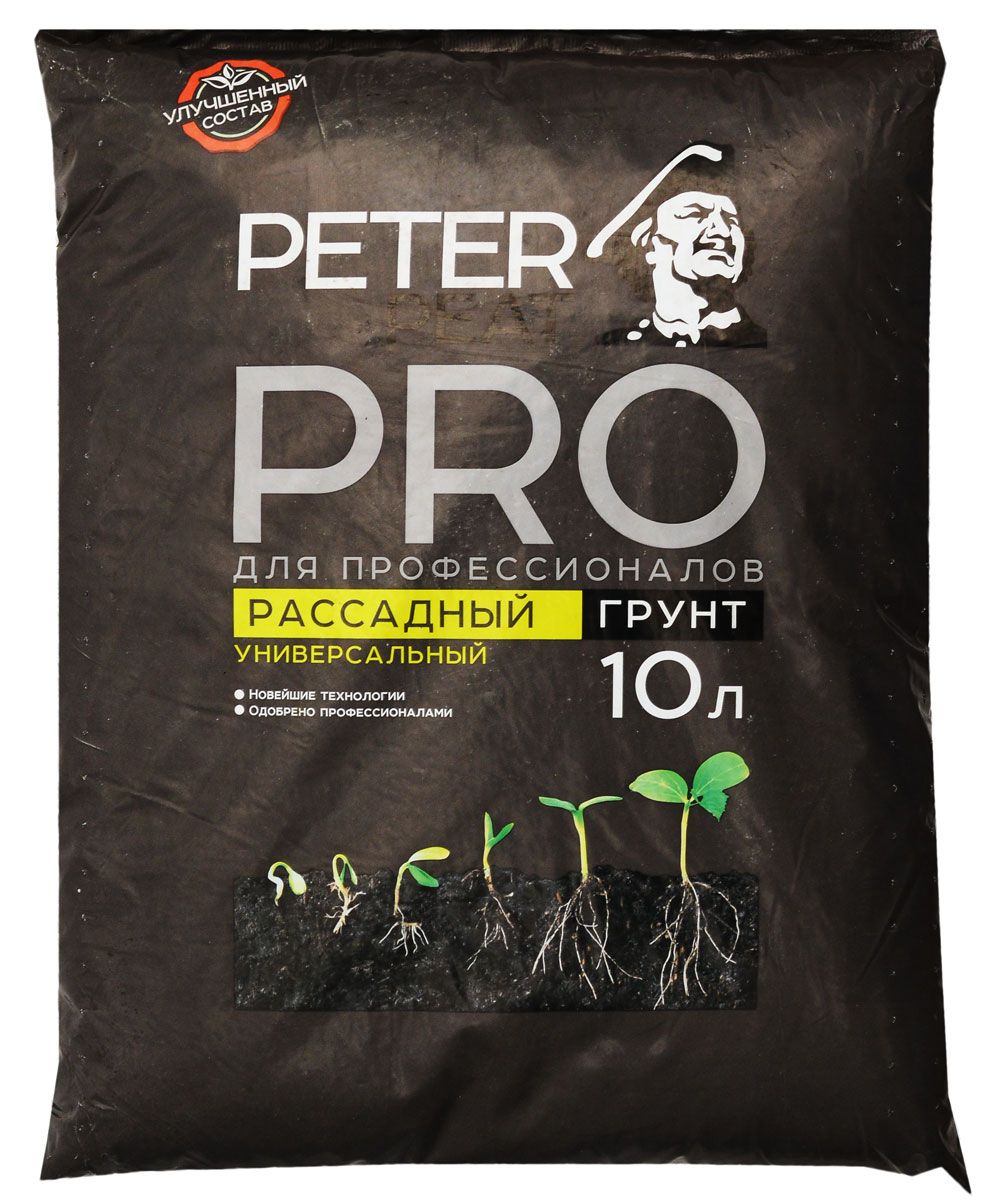
The product is an acidic mixture of high-moor and lowland peat, sand, limestone flour, agroperlite, hydroreagent and mineral fertilizer (nitrogen, phosphorus, potassium). The best results are achieved on seedlings, but subject to sufficient watering and the correct temperature regime. According to gardeners, for adult plants, this product should be diluted with lighter soil.
Average price: 75 rubles.
Advantages:
- inexpensive;
- light, crumbly;
- homogeneous, no debris;
- pH - not less than 5.5.
Disadvantages:
- despite the hydroreagent, the mixture dries quickly.
Seliger-Agro Miracle-Garden for seedlings 10 l
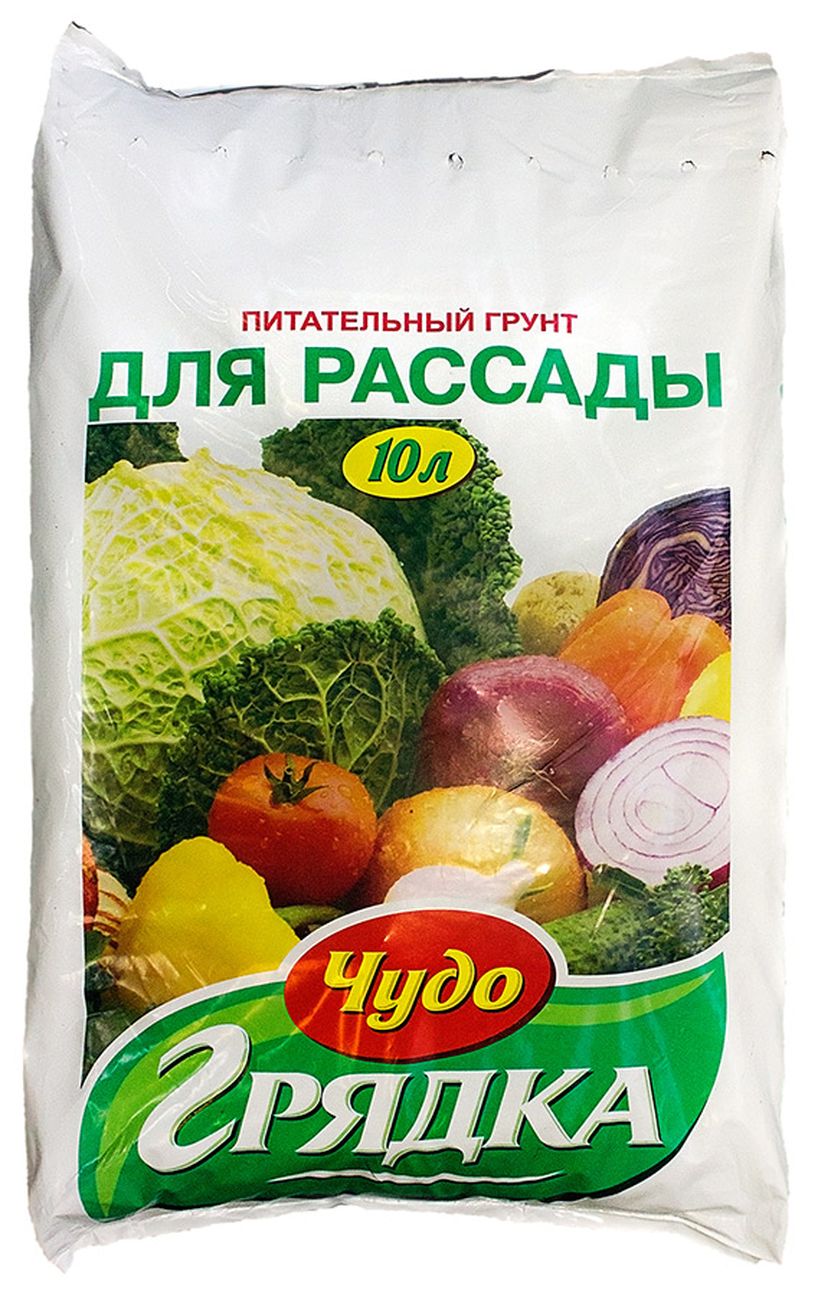
A balanced peat mixture with a high content of micro- and microelements is suitable for seedlings, fruit and berry crops and flowers.
Average price: 60 rubles.
Advantages:
- budgetary;
- universal;
- qualitative composition - peat, river sand, perlite, dolomite flour, mineral fertilizer;
- retains moisture well;
- loose.
Disadvantages:
- according to customer reviews, may contain minor impurities.
Agricola flower 10 l
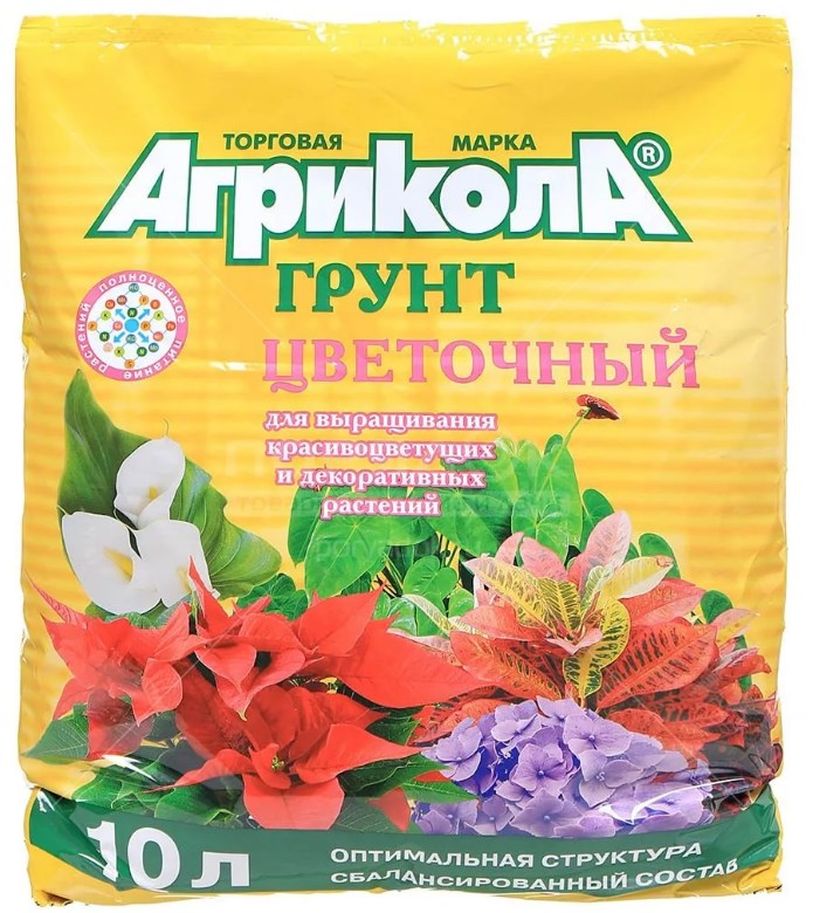
The peat-based product is suitable not only for ornamental and indoor plants. According to user reviews, this mixture can be used for any seedlings, such as nightshades, melons and gourds.
Average price: 78 rubles.
Advantages:
- inexpensive;
- universal;
- contains a sufficient amount of trace elements.
Disadvantages:
- shrinks strongly.
Hera for cacti and succulents 2.5 l
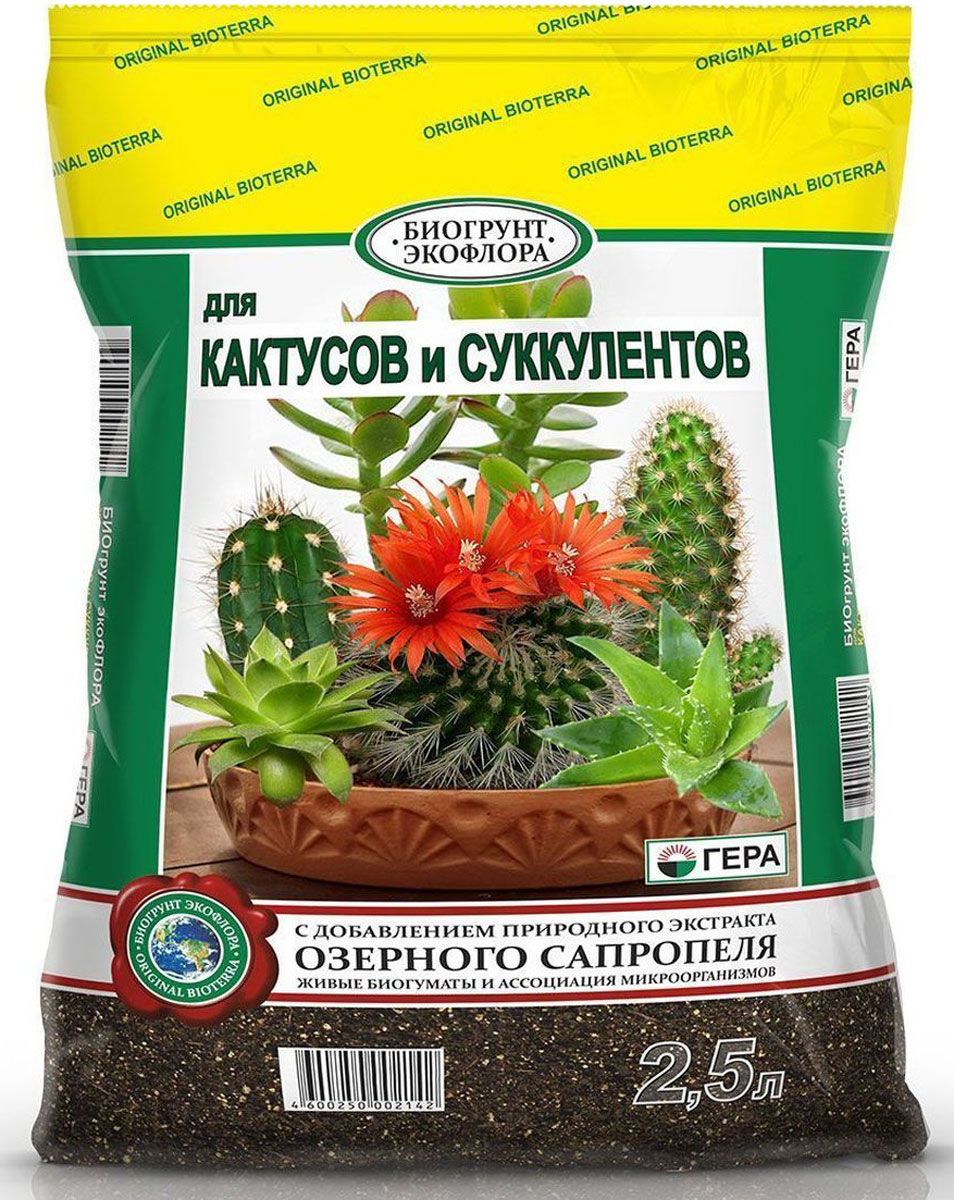
Light soil, which is a mixture of peat, river sand, sapropel, humate, dolomite flour, vermiculite and mineral fertilizer, gives equally good results both outdoors and indoors. Best suited for cacti and succulents, also suitable for growing flower seedlings such as Saintpaulias, primroses.
Average price: 30 rubles.
Advantages:
- cost;
- qualitative composition of the mixture;
- can be used for mulching;
- suitable for forcing (accelerating growth) of bulbous flowers;
- can be used to replace or fill up the topsoil in mature plants.
Disadvantages:
- not found.
Garden of Miracles for conifers 5 l
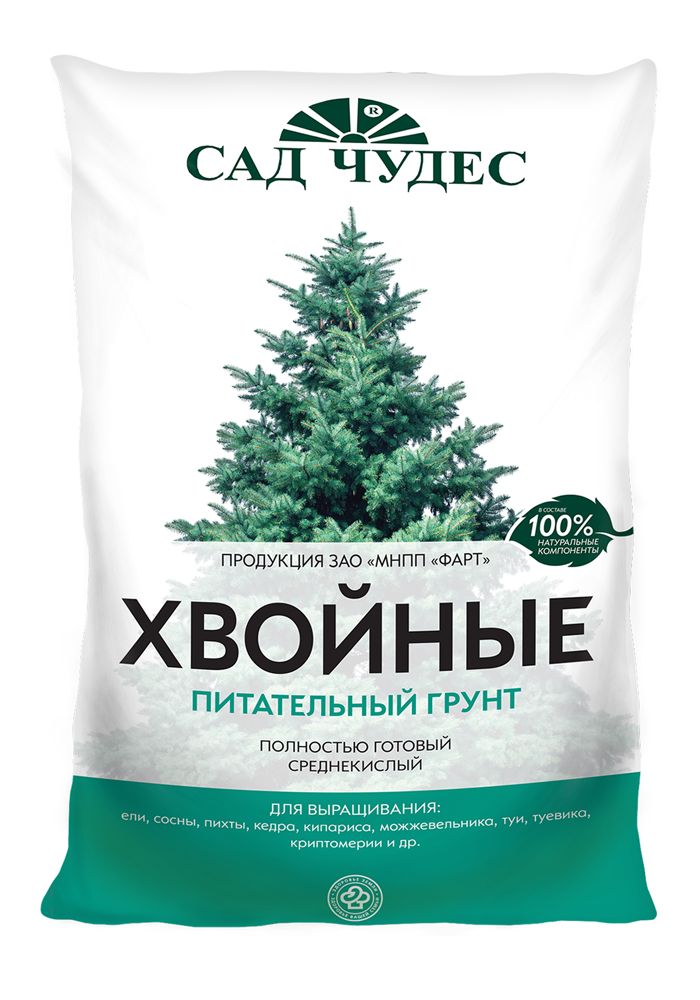
A ready-made medium-acid mixture for growing any coniferous plant: thuja, pine, juniper, cedar, cryptomeria, cypress and others. The product is obtained by mixing high-quality high-moor peat, river sand, enriched with microelements important for plant development - nitrogen, phosphorus, potassium.
Average price: 67 rubles.
Advantages:
- cost;
- balanced composition;
- plants take root better in a new place;
- suitable for bonsai;
- can be used both for pot cultivation and outdoors.
Disadvantages:
- not found.
Conclusion
How much does a high-quality soil for plants cost? For example, prices for ready-made soils for orchids in stores range from 40 rubles (for 2.5 liters) to 400 rubles for the same volume. The price depends not only on the composition and quality of the product, but also on the degree of promotion of the manufacturer.
If you have experience using one of the ready-made soils described in this rating or you know a better and more effective soil mixture, share your impressions in the comments.












